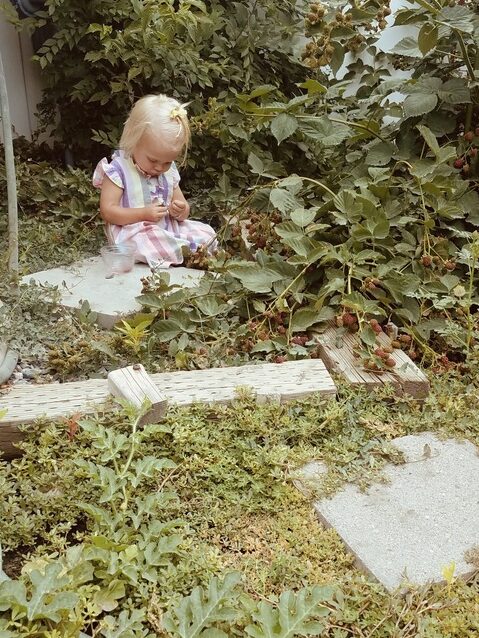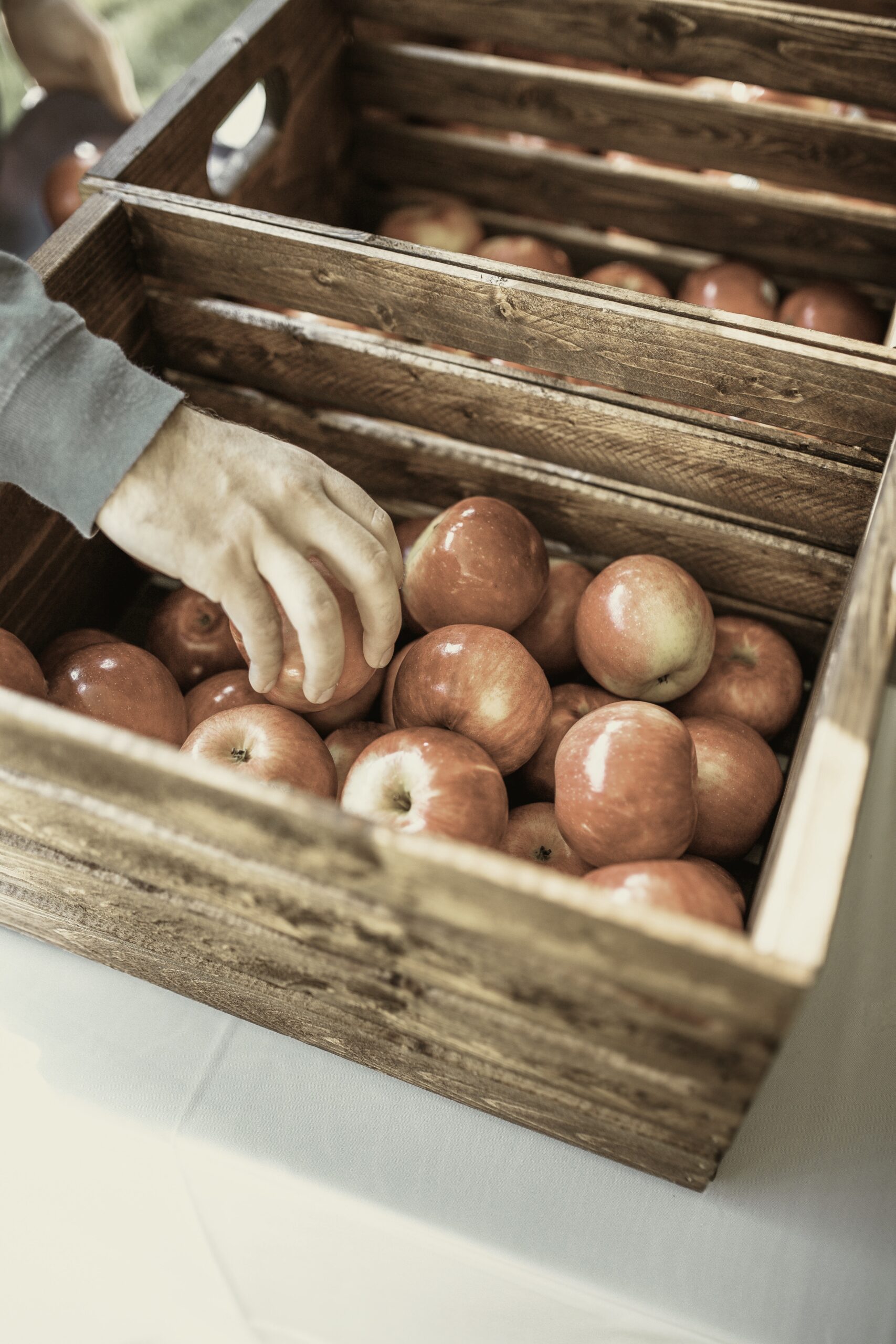Rising Emotions and How to Let Them Move Through Me
Roots and Truth
September 20, 2022
It is harvest time in the area where we live. I stopped by a fruit stand in the middle of town. There were about ten cars parked at the stand—on a Saturday right at noon. Peaches, plums, pears, watermelon and tomatoes are all in season. The smell of honeydew and cantaloupe melons filled the air, under the canopy that covered all of the fruit.
My toddler, Mae was with me. The space I was entering didn’t have space for a stroller. I actually like her toddling by my side (she’s my little buddy :), so she walked into the tent following me.
We had been to my oldest son’s baseball game all morning. The fruit stand’s location was on route home. It was noon and I hadn’t eaten lunch. I try to eat meals really consistently, if my blood sugar lowers it my anxiety gets high, quickly!
(You can read about my consistency in eating regular meals, chronic pain and chronic stress, in another blog post titled: The Implicit Message: Is Pain Trying to Teach Me Something?)
My Anger Issues: Thank You, but NO Thank You
I had fed the only Lara Bar I had packed that morning, to Mae (my toddler). (Such is the life of a mother!)
I was hungry, wanting to buy some fruit, so I was hurrying around placing fruit in a big box that one of the employees had given me. Mae was assisting me. She was pulling peaches out of the baskets that were close to the ground. She would pull one out, than hand me the fruit. She, in my opinion, the cutest thing! I adore how she loves to help and be by my side.


The fruit that I intended to set on top of my fruit collection box, were juicy-dripping nectarines. They were in a large box placed on the check out counter. Mae was behind me, as I finished filling my box. As I was ready to check out, I looked behind me for Mae. I hadn’t see her pulling a few pears, from another basket. She was moving the pears to another basket across the isle. In the middle of the transfer, she happened to drop a pear, and this crochety older women picked up a pear, quickly tossed it in the basket and scolded my baby (she 15 months),
“You shouldn’t be touching these, you’re costing these people money.”
(I think she was referring to the owner of the fruit stand.)
My beastly-stressed out- hungry-triggered fire came out in that very moment that I witnessed that exchange. Immediately I was enraged and fighting! I started yelling at her that I would parent my own child, thank you! And all these gastly things started running through my mind.
BUT, the women had already turned her back, and wasn’t paying attention to me.
I have enough training and therapy that I gave up the fight quickly. Anger is a bullet quick reaction when I am triggered.
I quickly looked around observing if anyone else was watching. The speakers under the canopy were playing music loud enough to drown out the words I had been using. I knew almost immediately that I was “angering”.
Angering is a word used when trying to work through the emotions that are presenting themselves as a result of a skewed or unwell childhood. (And angering should NOT be directed at someone, BUT should find a way out.)
In, what seemed to me perfect timing, I saw my husband walking toward me. He also was headed home from the baseball game that morning and saw our car parked at the fruit stand, and there he was! I was able to tell him the story and get the rest of my angry words out.
PLEASE, lady, or any other old person who wants to help, or give advice… You (may) have had your turn parenting. Now let me have mine!
Also the money thing; it is such a mindset of “the lack of”. It is a fear of going without. Which is so NOT what I want to learn from anyone. I would like to come into alignment with God so he may bless me now, and when I am in need.
I want to align with the goodness of the earth and receive what He has to give to me. So, GOOD HELL, don’t share your knowledge on what it is like to go without. It is not what I need, plus, it was one pear (and PEARS LITERALLY DO GROW ON TREES)!!!

Trauma happens because of the way that we have interpreted events from previous experiences.
A concept that I have learned around previous trauma, is that trauma speaks if we want it to or not,
but it takes understanding our patterns and triggers to start to train the body how to stop. And later down the road reduce our programed response.
It is also crucial, for healing, to speak out, at the right time. That skill needs to be honed. The timing aligned, that very day, that I could get my anger out! AND it DID NOT involve hurting or scaring anyone.
I told my husband immediately that I had been triggered by her and then I told him why I was so angry. It was my way to release, but it wasn’t hurtful to him (or anyone). He just laughed out loud and then I laughed too. Then all five of us, Curtis, our two boys, Mae and I, ate those juicy nectarines in the parking lot.
Later I remembered the dreams that I had the night before. I had been yelling at multiple men and women in their older age. Not sure what I was yelling, but I definitely have some anger to work through!
The Process of Honoring My Real Emotion
I’ve been digging into the source of my chronic pain. I’ve been experiencing disabling tension for over seven years. A general rule, that I’ve learned while exploring holistic health, is if a homeostatic healing is desired, emotional pain held inside the body, most likely will be felt at some time.
Some of this exploration happens in a form of a dream (or dreams). Some people learn to emote in talk therapy. Cleaning out old items in the home and moving them to a new home is a release mechanism for many. Healthy eating help many people. Therapies that actually get people moving like yoga or running are a way of moving stagnant energy. Many use a combination of these that I listed. (I do link more helpful resources at the bottom of this post.)
Emotions rising and moving should not be ignored. I ‘m learning to listen, acknowledge and let them speak up to be heard! Action is required to allow them to move. As rising emotions like anger or guilt, act up, I try to act quickly to name what I am actually feeling.
This is what the formula should be: Allow emotions out, acknowledge and learn from them, then return and allow the body to feel a sense of peace and fulfillment and self-forgiveness.
Assure it, with calm speaking, “It may take time, but it should all work out, body”.
But what if the emotions aren’t moving?
What if they are stagnant and symptoms of emotional and bodily distress continue? What does one do with those emotions?
Continue reading to unlock some of the concepts that relate to this complex question.
My Intention In Writing Is:
I would like to release the emotion that is creating the sensation of pain.
In my website I link a list of

The story that I am sharing is not intended to be a guide of the “right” way of doing things. Additionally I pray that you do not make the assumption that I believe God works with us when we are angry. I know God works with me when I am aligned with His will. But what if releasing anger is an avenue to becoming aligned with his will?
What HEAT Was Coming Out?
There is a concept that matches here. I learned about response, in a scientific concept called mirror neurons from Bessel Van Der Kolk, M.D. . Mirror neurons explain how we feed off of those around us.
It is a primitive response—like for like. An eye for an eye. You yell at me—I’ll yell at you!
The way I responded to this women was the same way that she had responded to me. She didn’t even look for me or for my response to her reaction. She reacted and went on with her day. I reacted and responded and with a spit fire attitude and continued to think about our interaction because it registered as hurtful to me. 1
After other research and continued experiments “it became clear that mirror neurons explained many previously unexplainable aspects of the mind, such as empathy, imitation, synchrony, and even the development of language.” Van Der Kolk, Bessel, The Body Keeps the Score: Brain, Mind, and Body in the Healing of Trauma, Penguin Books 2014, pg 58 Without even moving or acting information is being received by the brain just through observing.))
Let’s take this into account while reflecting on my story. What were the mannerisms and language the oblivious women used?
She was stern.
She was short tempered and harsh.
She didn’t ever look towards me or think about my situation.
There was no eye contact made in the middle of this exchange.
No wonder the bolt of lightning hits me. I was mirroring her response. Giving her the same exchange that she gave me. My response was stern, bold and unapologetic.
(And I honestly didn’t think that my baby was doing anything wrong.)
But there was no humanizing involved in the exchange. It was almost and animalistic reaction of defense. Of course I didn’t see her for a human, because she never looked toward me, treating me with that respect.
Here are some of the other negative feelings that were possibly drawn out from me.
As I was turning, surveying the scene, she was picking up a pear that was laying four feet in front of me. It showed the suffering child inside of me that I wasn’t capable of doing it myself. Some one had to “aid” me, step in and rescue. Essentially it shows a lack of trust. To her it was compulsive reactivity. Not a big deal, but to me it was a sign that I couldn’t do it my way.
There wasn’t time for Mae to reach down and pick it up either.
This quick-impulsive action left a disconnect in the chain of human connection. Instead it sent the message that children aren’t capable of solving their small problems and proves that adults lack imagination in believing that there is more then one way of doing something.
Adults often think we know it all. We’ve seen it all!
But what if we could just be a child again, relearning, rethinking everything? AND what if there was another way of doing things?
What if the women knew how to take the time to observe Mae, and let her correct her own mistake? Is there something to learn from a tiny little developing human?
I do realize that I was vulnerable that day. I was hungry, and I was in a hurry. The amygdala responded quickly, in a very animalistic way in order to keep my body safe.
And I also recognized quickly what was happening—that I wasn’t in control, so I walked away.
Moving Forward. What Can I Do?

What can I do? What are the next steps for me?
Recognize that I have agency. There’s a choice.
What do I want my response in the future to look like?
Today I have chosen to write. To express the story with the way I see and feel through personal life events. To combine my memories with quotes that I am reading and utilize vocabulary that I didn’t have as a child.
There’s a sense of freedom when I end with a positive note while writing my version of my story. This is a type of movement forward, or a way of getting the emotion of how I feel, out.
References, Resources and Definitions

- Parasympathetic Regulation: The autonomic nervous system’s state of being in the present. Sarah Baldwin is one of my favorite teachers that has taught me about this state where safety and mindfulness can happen.
- This YouTube video by Emma McAdams gives an explanation to some of the circumstances resolved in my story. This video also links to more resources.
- Healthy releasing strategies: This free class offered by Anna Runkle, how to let some of the stagnant or stuck resentment out. (Remember in my dreams I had been yelling.)
- A book that has taught me healthy “Angering” is Complex PTSD: From Surviving to Thriving: A GUIDE AND MAP FOR RECOVERING FROM CHILDHOOD TRAUMA by Pete Walker. I highly recommend this read. I think it can apply to everyone.

- In his book “The Body Keeps the Score” this is what he wrote about this concept. It was an “accidental discovery…the researchers had attached electrodes to individual neurons in a monkey’s premotor area, then set up a computer to monitor precisely which neurons fired when the monkey picked up a peanut or grasped a banana. At one point an experimenter was putting food pellets in to a box when he looked up at the computer. The monkey’s brain cells were firing at the exact location where the motor command neurons were located. But the monkey wasn’t eating or moving. He was watching the researcher, and his brain was vicariously mirroring the researcher’s actions.” Van Der Kolk, Bessel, The Body Keeps the Score: Brain, Mind, and Body in the Healing of Trauma, Penguin Books 2014, pg 58[↩]

Leave a Reply Cancel reply
© roots and truth | All rights reserved | Site design by linsey rhyne co.